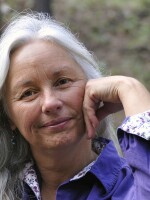"Taos" means "Place of the Red Willow,” in the Tiwa language spoken by the Pueblo people of New Mexico. Thus the name of the Red Willow Center at Taos Pueblo, a place designed to rekindle traditional agricultural knowledge.
Red Willow Center started as a small demonstration farm more than twenty years ago. It’s grown into a multi-faceted operation now boasting an acre and a half of irrigated land and three greenhouses. It’s a place for youth, elders, and others to share and learn about old and new ways of farming.
At 7,200 feet in elevation, the growing season is short and challenging. Food is grown inside the heated greenhouses for a good part of the year. In summer the outdoor fields are planted with a wide array of vegetable crops that are sold to institutions and restaurants, or donated to locals. Community members can also purchase shares in a Community Supported Agriculture program, and buy produce at a weekly farmers market.
A big focus of Red Willow Center is on paid internships for young people. They learn from elders how to grow traditional foods like Taos Pueblo white corn and blue corn, red beans, and hubbard squash. Seed-saving is also passed along, as another way to assure the old foods are sustained.
For a thousand years, Puebloans have been an agricultural people, says the center’s executive director Tiana Suazo, so they possess deep knowledge about growing food. Suazo believes teaching the next generation is critical. Young people, she says, will be the ones “making decisions for land, water, and air” in the future.
This Earth Note was written by Rose Houk and produced by KNAU and the Sustainable Communities Program at Northern Arizona University.







